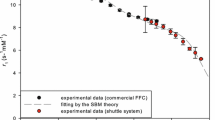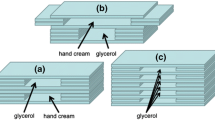Abstract
A significant problem for whole body PEDRI is the absorbed RF power in the body. In this paper the optimal pulse and field strength are determined which maximize the signal to noise ratio for a certain RF power level. Our calculations show that the relaxation times of the free radical contrast agent are the dominating factors which determine the pulse sequence and main field strength.
Similar content being viewed by others
References
D.J. Lurie, D.M. Bussell, L.H. Bell, and J.R. Mallard, J. Magn. Reson. 76, 366 (1988).
A. Abragam, The Principles of Nuclear Magnetism, Oxford University Press, Oxford, 1961.
D.J. Lurie et al., Abstract 7th Annual Meeting of the SMRM, 1992, p. 72.
K.H. Hausser and D. Stehlik. In: J.S. Waugh (Ed.), Advances in Magnetic Resonance, Vol. 3, Academic Press, New York and London, 1968, p. 79.
P. Röschmann, Med Phys., 14, 922 (1987).
Author information
Authors and Affiliations
Rights and permissions
About this article
Cite this article
Konijnenburg, H., Mehlkopf, A.F. Optimal SNR for proton electron double resonance imaging. Res. Chem. Intermed. 22, 557–561 (1996). https://doi.org/10.1163/156856796X00188
Received:
Accepted:
Issue Date:
DOI: https://doi.org/10.1163/156856796X00188




